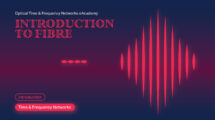Words: Xavier Jeannin (RENATER), Ivana Golub (PSNC), Tim Chown (Jisc)
The networking industry landscape is evolving fast, and the market trend is now directed towards data centres and cloud-based services. The strategy of new players who want to enter this market is to seek solutions not only at lower prices and a higher port density ratio, but also to decouple the network operating system (NOS) from the hardware in order to remove their potential customers’ dependency on the traditional monolithic vendor router/switch market. Moreover, programmable solutions are emerging based on DPDK (Data Plane Development Kit), FPGA (Field Programmable Gate Arrays) and P4 chipset forwarding (Intel® Tofino™).
What about white box?
A white box is a switch/router manufactured from commodity components that allows different NOSs to be run on the same piece of commodity hardware, decoupling the NOS software from the hardware. White boxes, first deployed widely in data centres, offer an impressive forwarding capacity for a very competitive price. The white box chipset forwarding characteristics (forwarding capacity, internal memory, size of buffers) determine the scenarios in which it can be used, for example, Internet Exchange switch, data centre, Customer Premise Equipment, etc.
To evaluate whether white box technology is a real opportunity for the GÉANT community, WP6, the Work Package for Network Technologies and Services Development in the GÉANT (GN4-3) Project performed tests to validate white box solutions in the context of NREN use cases, which were then put into production if the outcome was acceptable to the NREN.

Aspects for consideration
The aspects to consider for the deployment of such white boxes included routing features, network management (monitoring, authentication, maintenance model, etc.), security and the license model. The business decision whether to go into production was based on technical considerations; total cost of ownership (as described in a white paper produced by the project) [TCO]; on the internal organisational constraints; and on the NREN’s strategy. The different use cases studied are documented in white papers: three production use cases RENATER ([GIX] and [CPE]) and GRNET [Data Centre], performance validation [Perf], and FUNET’s CPE use case [CPEFUNET].
There are four main conclusions of this work:
- White boxes can be used in production for many NREN use cases.
- Implementing a white box solution does not require different knowledge and expertise than that which already exists in NRENs.
- The decision to use white boxes in production depends on technical and cost aspects, as well as on organisational aspects, such as previous knowledge and experience, constraints, and strategy. Thus, some would choose to stay with more complex, more expensive solutions from a vendor they trust, others choose specific use case-based white box solutions focused primarily on the functionalities they need for that use case.
- Validation of any white box device should include detailed and thorough performance testing of the chosen hardware and NOS combination. The set of functionalities to be tested has to match the target use case, protocols, and parameters set of this use case (number of BGP routes, LSP, VRF, etc). Considering the number of control plane features and their interoperability, an automatic test process is highly desirable.
In parallel to this work, another WP6 team extended the white box paradigm further and developed an open-source RARE Operating System (ROS) running over a programmable white box. ROS is now sufficiently mature and available for production use on DPDK, BMv2 and Intel® Trofino™ ASIC P4 platforms, greatly enhancing the benefits of using white box platforms.
Want to learn more?
More detail about this work will be presented during the upcoming infoshare “White Box in NREN context” on 8 December 2021.
This article is featured on CONNECT38! Read or download the full magazine here







